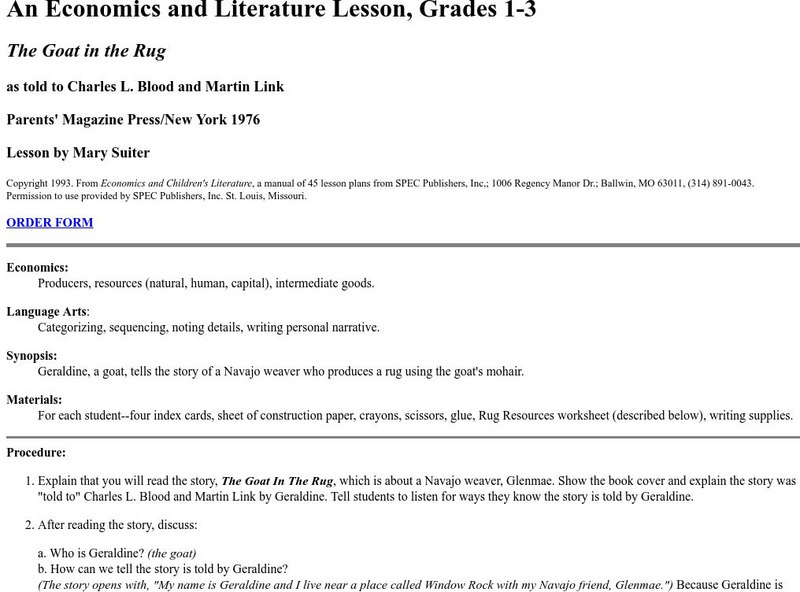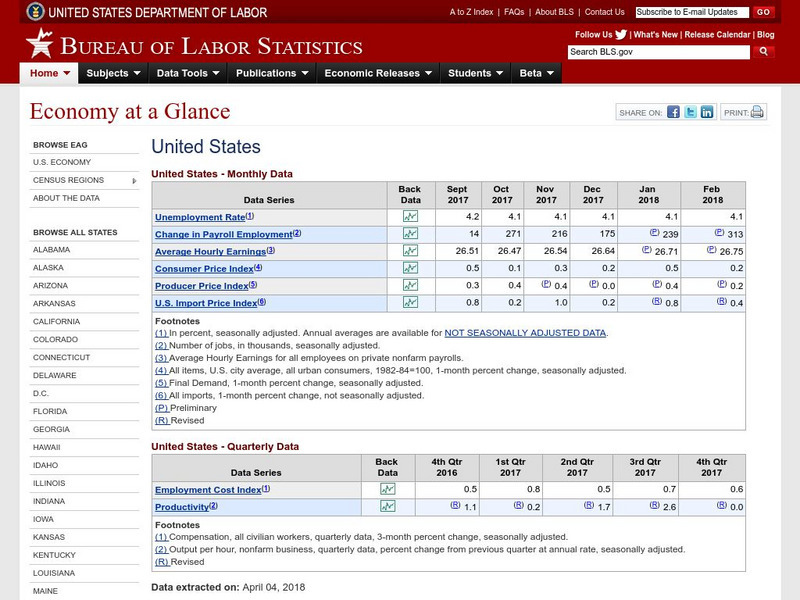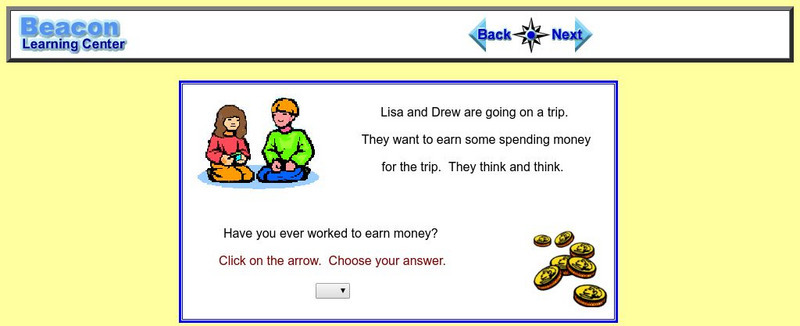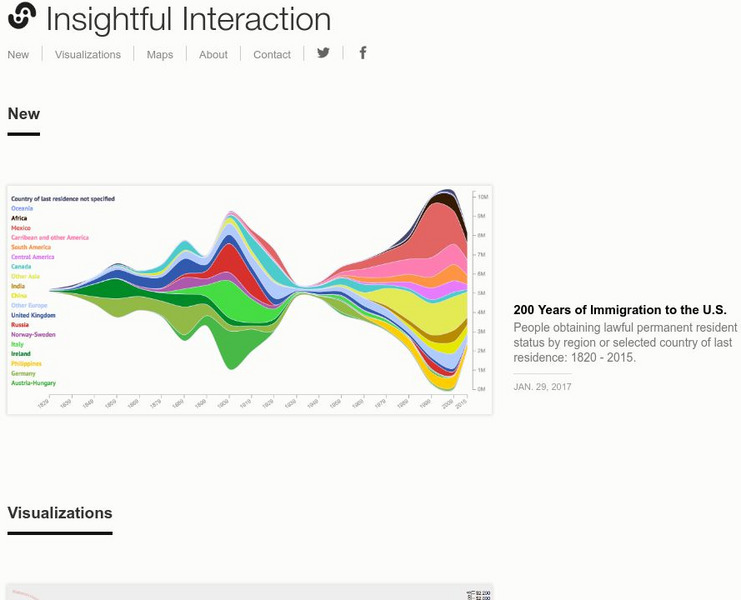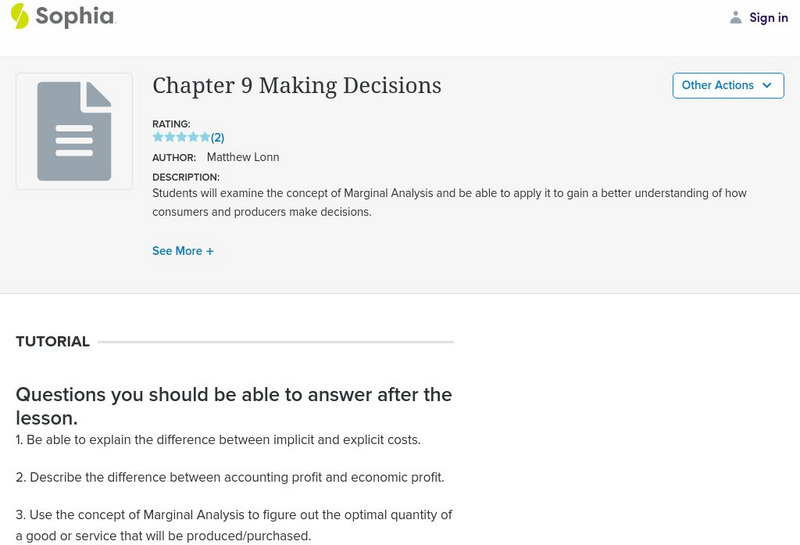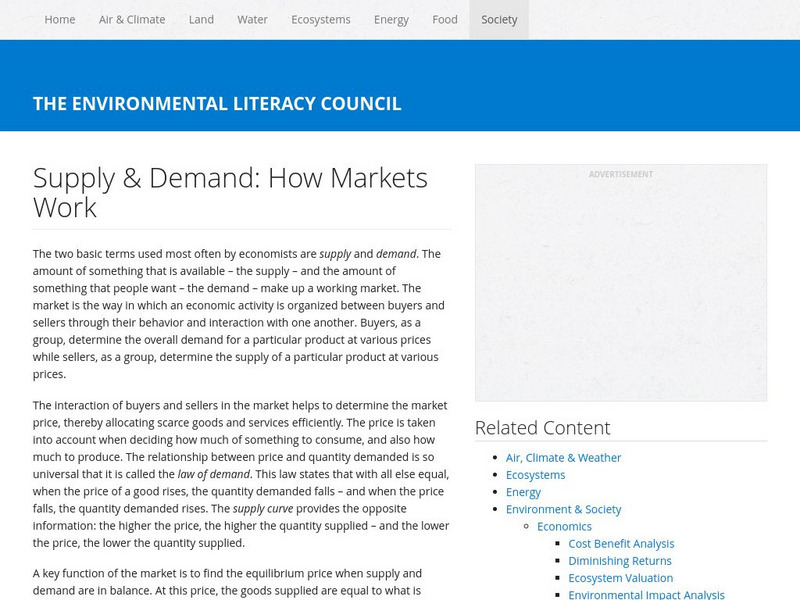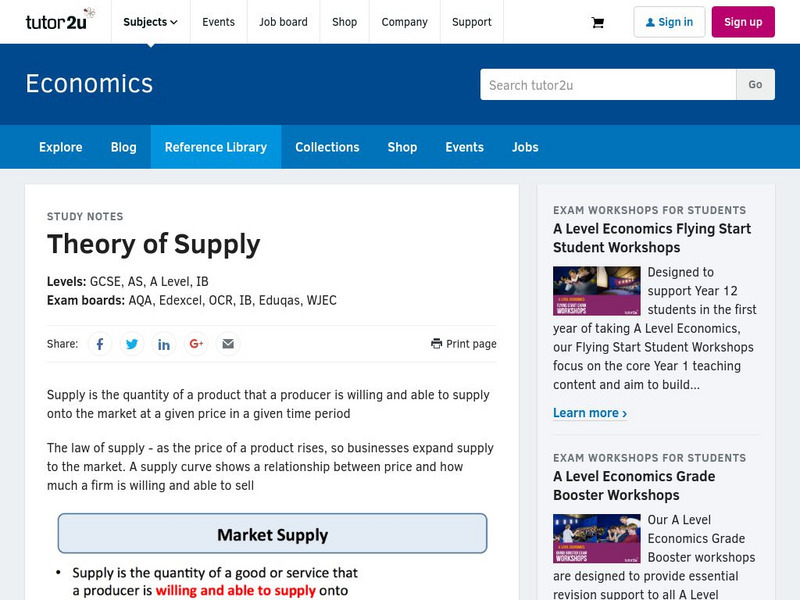Utah Education Network
Uen: Producing and Consuming
Lesson that helps students understand the difference between producers and consumers. Students create booklets, making them producers, and then use the booklets to complete the lesson, making them consumers.
Khan Academy
Khan Academy: Lesson Overview: Consumer and Producer Surplus
This lesson introduced the basics of a branch of economics known as welfare economics, which is interested in how the allocation of resources affects well-being. The most important concepts used in welfare analysis are total surplus and...
Khan Academy
Khan Academy: Economic Efficiency
Read about consumer surplus, producer surplus, and deadweight loss. Did you know that demand and supply diagrams can help us understand more than supply and demand curves and equilibrium? They can also help us understand economic...
University of Nebraska Omaha
An Economics and Literature Lesson: The Goat in the Rug
This is a lesson plan geared toward first through third grades, cross-curricular, dealing with economics and literature. "Learn about economics: producers, resources (natural, human, capital), intermediate goods; and Language Arts:...
Council for Economic Education
Econ Ed Link: Hey, Mom! What's for Breakfast?
In this lesson young scholars working in cooperative groups will: 1.Discuss food items they consume for breakfast. 2.Investigate elements of foreign culture, particularly food. 3.Use map skills to locate selected foreign nations....
SMART Technologies
Smart: Economic Review Lesson
This activity reviews goods, services, producers, and consumers. The lesson consist of sorting, fill in the blank, writing, and racing car review quiz.
ClassFlow
Class Flow: Economics Vocabulary
[Free Registration/Login Required] This flipchart explains basic economics vocabulary such as producers, consumers, and different kinds of resources; limited, unlimited, natural and human. Student assessment items are included.
US Department of Labor
Bureau of Labor Statistics: u.s. Economy at a Glance
The seven major economic indicators for the U.S. economy are listed here in an easy to read chart. The seven indicators are unemployment rate, change in hourly employment, average hourly earnings, consumer price index, producer price...
Beacon Learning Center
Beacon Learning Center: Business Buddies
Help characters Lisa and Drew learn simple economic principles by choosing what goods they will need for their lemonade stand. Continue exploring economic concepts by determining the producers, services, and consumers associated with the...
University of Colorado
University of Colorado: Demand, Supply, and Markets
This site discusses in great detail the differences between demand, supply, and markets. Useful economic terminology is identified in bold.
Other
Insightful Interaction: Visualizations
A collection of interactive visualizations that were produced through analysis of economic, political, and market research data. Topics are diverse, e.g., military spending and trade, immigration, consumer spending, crime, unemployment,...
Sophia Learning
Sophia: Making Decisions
Notes and a video clip provide students with an introduction to the idea of marginal analysis and of how consumers and producers make decisions.
The Environmental Literacy Council
Environmental Literacy Council: Supply and Demand: How Markets Work
An article on supply and demand and how markets work. Related links for teachers.
Council for Economic Education
Econ Ed Link: Frontier Specialists
The level of output in an economy can be increased through specialization. Economic specialization occurs when people produce different goods and services than they consume. It requires people to exchange goods and services.
Council for Economic Education
Econ Ed Link: Hey Pop!
One of the best sounds and smells is fresh popcorn! At the movies, at the fair, or at home, everyone likes to munch on popcorn. What is your favorite brand? Is the most expensive the best? You will conduct a taste test to find out. You...
Council for Economic Education
Econ Ed Link: Lean on Me! We Depend on Each Other!
Click and drag each picture to put the steps of producing and consuming a book in the correct order.
Khan Academy
Khan Academy: Lesson Overview: Taxation and Deadweight Loss
This article provides an overview of Taxation and Deadweight Loss. When a tax is imposed on a market it will reduce the quantity that will be sold in the market. Whenever the quantity sold in the market is not the equilibrium quantity,...
Massachusetts Institute of Technology
Mit: Open Course Ware: Principles of Microeconomics
An introductory course in the fundamentals of microeconomics. Includes a list of suggested readings, lecture notes, assignments, and exams.
Other
Coursera 1 1.1. Scarcity and Its Implications
This module discusses fundamental problem of scarcity challenges us to think about an allocation mechanism to determine what is produced and who consumes it. It discuss scarcity and allocation mechanisms. In this course,the focus is on...
Tutor2u
Tutor2u: Theory of Supply
This site provides a simple definition of market supply and the supply curve. Illustrates concept with a graph.
Curated OER
Market Failure; Positive Externalities
This site examines how society can benefit by producing and consuming more of a product that causes a positive externality.
Khan Academy
Khan Academy: Price Ceilings and Price Floors
This article discusses how quantity demanded react to artificial constraints on price.



